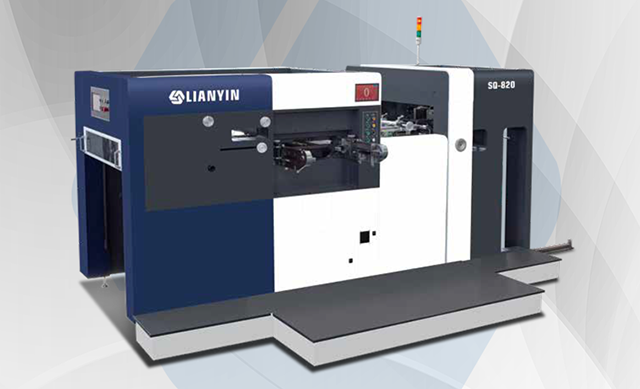Understanding Fully Automatic Die-Cutting Machines
Fully automatic die-cutting machines represent the next generation of industrial finishing equipment. These machines are designed to automate the cutting, embossing, and shaping of materials with exceptional precision and speed. Industries such as packaging, printing, textiles, electronics, and automotive rely on fully automatic die-cutting machines to deliver high-quality, consistent products while reducing manual labor and material waste.
With features such as servo-driven feeding systems, automated die positioning, and multi-functional stamping units, these machines can process complex designs efficiently. They are particularly suitable for luxury packaging, labels, greeting cards, promotional materials, and specialty products. This guide will provide a detailed understanding of their product certification, user feedback, testing and maintenance, and transportation considerations to help buyers make informed decisions.
Certification ensures that fully automatic die-cutting machines meet international safety, quality, and performance standards. It is a critical consideration for manufacturers seeking reliable and compliant machinery.
CE marking indicates conformity with European Union safety, health, and environmental protection requirements. It covers:
Electrical safety
Mechanical safety
Machine noise and vibration
User safety features
ISO 9001 certification ensures the machine is manufactured under strict quality management processes, focusing on:
Consistency in production quality
Customer satisfaction
Process control and continual improvement
RoHS (Restriction of Hazardous Substances) compliance ensures environmentally safe production, free from hazardous materials such as:
Lead (Pb)
Mercury (Hg)
Cadmium (Cd)
For the North American market, UL certification guarantees electrical safety and performance compliance, protecting operators and minimizing liability risks.
Certified machines provide confidence in durability, reliability, and adherence to international standards, making them suitable for global production and export.

Feedback from current users offers valuable insights into the performance, reliability, and usability of fully automatic die-cutting machines.
Users report that fully automatic die-cutting machines:
Reduce manual labor by up to 70%
Increase production speed by 50–80% compared to semi-automatic machines
Allow for continuous operation with minimal downtime
Operators highlight:
Uniform embossing and cutting depth
Accurate registration for multi-layered materials
Reduced material waste and higher yield
Feedback emphasizes:
Intuitive touch-screen control panels
Programmable production recipes for repeat jobs
Quick die and foil change mechanisms
While highly rated, some users note:
Initial training is essential for optimal operation
Preventive maintenance improves long-term performance
Adequate factory space is required for large machines
Overall, customer satisfaction is high, with manufacturers reporting significant ROI within the first year of installation.
Proper testing and maintenance are critical to ensure the longevity, safety, and optimal performance of fully automatic die-cutting machines.
Before production, machines should undergo:
Electrical system checks
Pneumatic and hydraulic system tests
Feed and delivery alignment
Calibration of pressure, temperature, and speed
A structured maintenance plan includes:
| Frequency | Maintenance Tasks |
|---|---|
| Daily | Clean feeding rollers, lubricate moving parts, check for paper jams |
| Weekly | Inspect belts, rollers, and dies for wear; check air pressure and pneumatic components |
| Monthly | Calibrate sensors, check temperature control units, inspect bearings |
| Quarterly | Deep cleaning, software updates, and safety system checks |
| Annually | Full mechanical and electrical inspection; replace worn components |
Use manufacturer-recommended lubricants for moving parts
Keep feed and delivery areas free of dust and debris
Clean heating plates and stamping units to avoid foil residue
Misfeeds: Check feeding alignment and suction pressure
Incomplete stamping: Adjust temperature, pressure, and die alignment
Motor overload: Inspect servo drive settings and bearings
Foil wrinkling: Adjust tension rollers and feed speed
Regular maintenance ensures consistent product quality, reduces downtime, and prolongs machine lifespan.
Fully automatic die-cutting machines are heavy, precision equipment. Proper transportation is essential to avoid damage during shipment.
Machines are typically partially disassembled
Crated with shock-absorbing materials to protect sensitive components
Protective coverings prevent dust, moisture, and corrosion
Sea Freight: Suitable for overseas shipping; requires waterproof packaging and secure strapping
Land Transport: Use reinforced flatbeds with proper tie-downs to prevent movement
Air Freight: Only for lightweight models or urgent shipments
Use forklifts or cranes rated for the machine’s weight
Avoid tilting or sudden shocks during lifting
Ensure the machine is level and secured before operation
Inspect for transport-related damage
Reassemble any detached components
Perform pre-operational testing before starting production
Following these transportation guidelines ensures safe delivery and immediate readiness for production.
Fully automatic die-cutting machines are widely adopted across various industries due to their precision, speed, and versatility.
Luxury boxes, wine packaging, cosmetic boxes
Custom inserts and promotional packaging
Reduces production time and material waste
Greeting cards, book covers, labels
Multi-layered designs and embossed finishes
Enhances product aesthetics and brand appeal
Cutting and embossing fabrics, plastics, and composites
Creating intricate patterns and components
Enables consistent batch production
These machines not only improve efficiency but also enhance product quality, meeting modern manufacturing demands.
Understanding fully automatic die-cutting machines is essential for manufacturers looking to upgrade production efficiency, reduce labor costs, and maintain high-quality outputs. By considering product certifications, user feedback, proper testing and maintenance, and transportation guidelines, companies can maximize the benefits of these advanced machines.
Fully automatic die-cutting machines offer a comprehensive solution for industries ranging from packaging and printing to textiles and electronics, delivering precision, speed, and reliability. Proper operation, preventive maintenance, and adherence to safety standards ensure long-term performance and a strong return on investment.
This website uses cookies to ensure you get the best experience on our website.
Comment
(0)